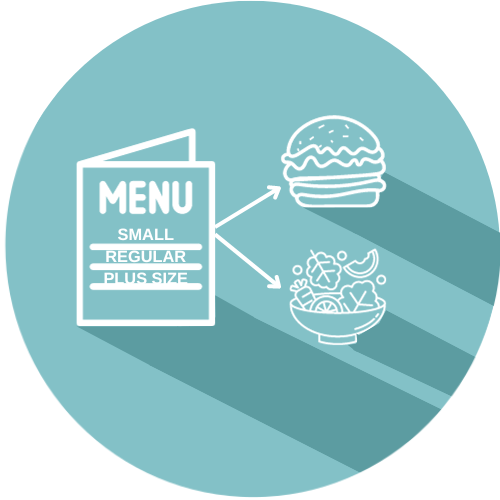Finding a marketing goldmine in unexpected situations
Do you take negative feedback with a pinch of salt, or do you react with fervor even at the risk of losing goodwill and customers’ business? Most brands will find themselves the subject of questionable public scrutiny at some point or another, with unfiltered social media channels fuelling unwarranted insults. Common responses include denying the accusations, ignoring them completely, or accommodating to the situation, even apologizing for no real cause.
Posted in Archive, Strategy
published on Tuesday, 11 November 2025
Go back to the last video ad that caught your eye. Was it the creative that stopped you from scrolling? Was it the message? Or perhaps it was the way it made you feel? While you might know why you liked it, your brain and body were telling a different story through subtle signals you weren't even aware of - small expressions on your face and tiny changes in your skin's sweat response.
Posted in Archive, Advertising
published on Tuesday, 19 November 2024
Picture this: You're wrapping up an online shopping session, with the mouse hovering over the checkout button. Suddenly, you notice a little green leaf next to one of the delivery options. "Huh," you think, "that's new." Without much thought, you select it and complete your purchase. Congratulations! You've just been "nudged" into making a more sustainable choice. But how did that happen, and why should marketers care?
Posted in Archive, Strategy
published on Tuesday, 24 September 2024
As marketers, we are constantly looking for ways to enhance the customer experience and achieve a sustainable revenue stream. But what if the key to success lies not in what customers tell us, but in what their brains reveal?
Posted in Research, Archive
published on Wednesday, 17 July 2024
Remember the last time you donated to a preferred charity or cause. Was it because an advert caught your attention and you felt compassion, shame or outrage? Or was it because you know someone affected by the issue presented in the ad? It’s also likely you were aware of the non-profit organization work; you felt you were making a difference by paying attention or donating. Research suggests we make donations according to our personal preference and values, to reflect our own identity. That’s why we choose to give to different causes (Chapman et al., 2022).
Posted in Archive, Advertising
published on Tuesday, 07 May 2024
I invite you to play along and do a short thinking exercise. Try to identify these slogans and taglines. Can you also associate them with their brand? (Take a peak at the end of the article to check your answers): “Got milk?”; “Don’t leave home without it.”; “Where’s the beef?”; “Think different.”; “Melts in your mouth, not in your hands.”; “Reach out and touch someone.”; “A diamond is forever.”; “Finger-lickin’ good!”; “The uncola.”; “Let your fingers do the walking.”; “Think outside the bun.”; “We bring good things to life”; “Think small.”
Posted in Archive, Advertising
published on Tuesday, 09 April 2024
Ever wondered what is actually shaping your product preferences? Before you click that "Add to Cart" button, what if I told you that the aesthetics of product ratings is subtly guiding your choices?
Posted in Archive, Strategy
published on Monday, 08 January 2024

Picture this: you're wandering the aisles of a grocery store, looking for a healthy snack. You come across two seemingly identical products, but one has a brand name that's as long as a Shakespearean monologue, while the other has a snappy, short name that's easier to remember. Which one are you more likely to trust as the healthier choice? Did you rely on your instincts and beliefs about the product rather than scrutinizing its nutritional label?
As consumers, our food choices are heavily influenced by our intuition (Chan & Zhang, 2022; Motoki & Togawa, 2022). In turn, our intuition is largely shaped by branding elements. From brand names to logos and even the personality associated with a brand, these cues offer us valuable information that guides our purchasing decisions.
For instance, foods packaged in green or blue colors are often perceived as healthier, while those in red packaging may trigger a different response (Huang & Lu, 2015; Schuldt, 2013). But what about brand names? Can a simple name affect how we perceive the healthfulness of a product?
Posted in Archive, Strategy
published on Tuesday, 21 November 2023
Do you usually go for a “fat burger”, “super-size burger” or a “thin cookie”? These kind of labels push us to make mental associations with human body shapes and types, triggering our emotions and the way we perceive and evaluate the food we consume. A “thin cookie” implicitly suggests a small portion and lower calorie content perfect for those who work out or watch their figure. A “fat burger” caters to hedonistic needs and might appeal to people getting a kick from larger, more satisfying portions. These very words play on self-image and fitting social expectations. As humans, we tend to make choices that gain us acceptance from others we identify with and demonstrate our conformity to established norms (Van de Waal, Borgeaud, and Whiten 2013).
Posted in Archive, Strategy
published on Tuesday, 26 September 2023
It’s early morning and you’re having your first coffee. Not too strong, not too weak. Just as you like it. You feel energized. Ten minutes later you’re on your laptop checking your emails and your social media. You decide to look at your Amazon account and see if your favourite coffee table is still available. Yes, it is, and it now includes free shipping! Add to cart. You’re now recommended luxury scented candles to match the table design. As well as beautiful decor items such as a chic lamp, a stylish vase and a set of artificial plants in pots that are way too expensive (even if water-wise)! Not a planned shopping spree, but you feel compelled to get them all. OK, done! Just four days until they’re shipped!
Wait, how did this happen? Did your coffee have anything to do with it? And if so, is coffee capable of making me shop more every time I have a cup of it?
Posted in Archive, Conversion
published on Tuesday, 15 August 2023
Do you know any of the people in these picture?

Neither do I. Actually, I ‘created’ them using this AI-powered website: https://thispersondoesnotexist.com
These people do not exist. Yet the powerful realism of these faces has the ability to create the belief that they do relate to actual people. This may be a problem in consumers’ perceptions of a brand, especially for the charity sector. And we’ll see why.
Posted in Research, Archive
published on Tuesday, 27 June 2023
What is the absolute dream of a brand struggling with a dwindling consumer base? Waking up to find out their demand has suddenly gone through the roof and the biggest problem is not being able to keep up with production!
That’s what happened to the confectionary brand MoonPie when they changed marketing tactics in 2017. Was it their product? Their distribution or sales promotion that they’ve changed?
Posted in Archive, Advertising
published on Tuesday, 21 March 2023














